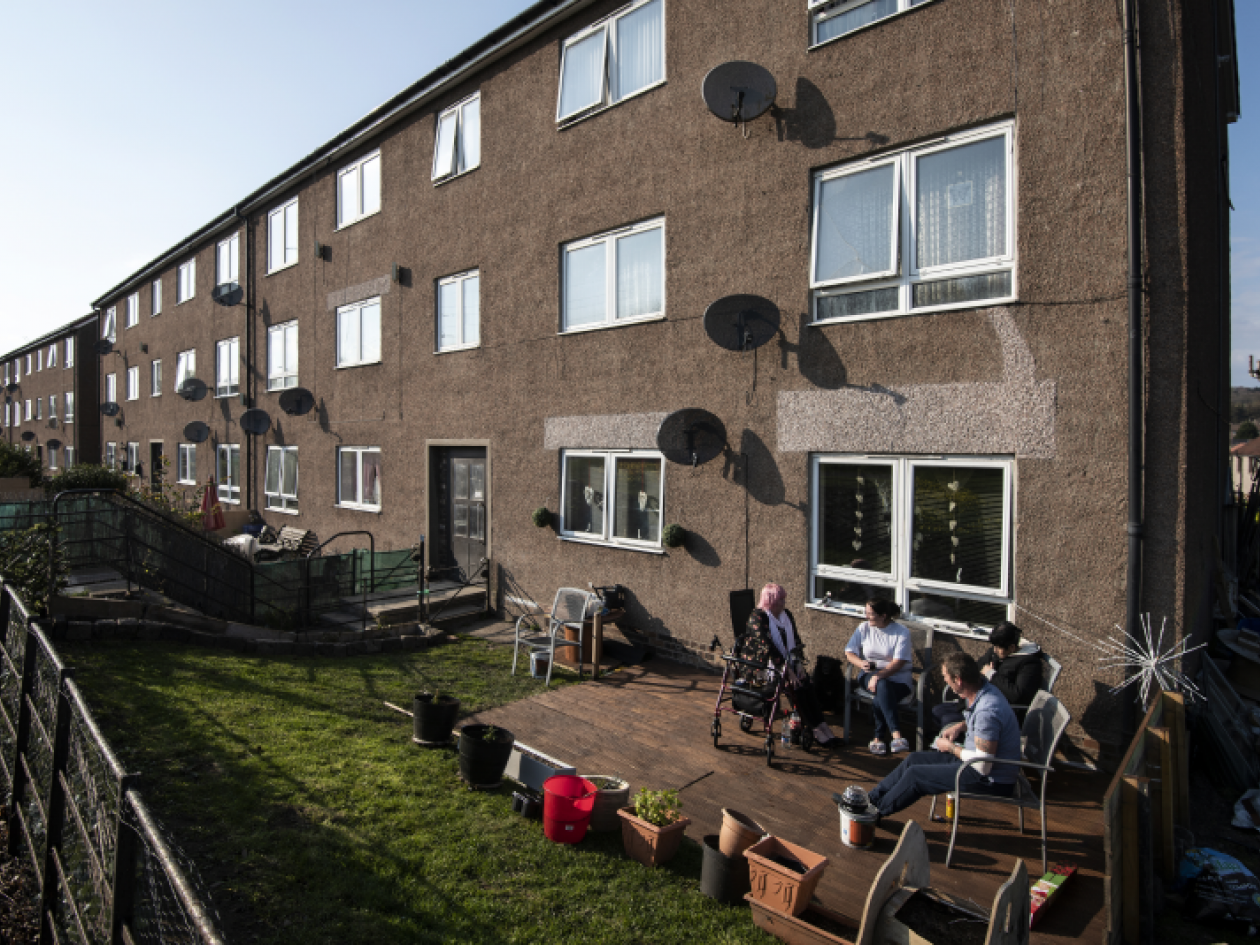There has been a lot of research into mental health and wellbeing during the pandemic, and we know that people living in disadvantaged circumstances are among the most affected. We wanted to shed more light on this by considering, for the first time, the role of people’s neighbourhood in shaping their response to the Covid era.
In lockdown, people were forced to spend more time at or near home, likely only to be interacting with their neighbours. Deprived neighbourhoods tend to be more densely populated with smaller houses and less desirable living conditions, so we expected to find that people in these areas had felt the effect of the pandemic more severely than those in less deprived areas.
The data
We used data from Understanding Society taken from before and during the pandemic, measuring mental health (or ‘hedonic wellbeing’) using the GHQ-12 questionnaire, and life satisfaction (‘evaluative wellbeing’) by asking respondents how satisfied or dissatisfied they are with life on a scale of 1-7. These were combined with data on neighbourhood socio-economic status from the Ministry of Housing, Communities and Local Government, and on deprivation from the 2019 Index of Multiple Deprivation.
Our findings
Our results showed that everyone tended to report lower levels of wellbeing in May 2020 compared to 2018, and that average wellbeing was lower as we moved down through quintiles of deprivation. This graph shows that in May 2020 neighbourhood deprivation has a much stronger negative correlation with mental health compared to before the pandemic.
By July, when the lockdown was over, the correlation starts to come back to pre-lockdown values. On life satisfaction (‘evaluative wellbeing’), though, we can see that the negative effect weakened.
Neighbourhood factors
The more deprived the neighbourhood, the more likely its population was to be younger and more urban, with a lower proportion of white and highly educated people. Household size and number of children tended to be higher in more deprived neighbourhoods than in less deprived ones, but the proportion of people living with a partner was much lower. Also, those living in more deprived areas tend not to work from home and to report more underlying health conditions than those in less deprived areas.
We found that more educated people suffered more from the pandemic in terms of mental health than less educated people, but didn’t seem to suffer more in terms of life satisfaction. We looked at employment, too, and found that working conditions seem to matter more than employment status. Working from home seems to lower mental health – perhaps because people find it stressful, both in terms of working hours and their inability to separate work from private life. Also, perhaps not surprisingly, people who feel more financially secure report higher levels of wellbeing, and those with an underlying health condition reported lower levels.
Living with a partner was a boost for both types of wellbeing during lockdown, but having children had mixed results. The number of children in a household had a positive correlation with mental health before the pandemic, and a negative one as soon as the pandemic started. This may be because children are a source of long-term life satisfaction, but in the short-term, and especially in lockdown conditions, might cause parents higher stress.
Other factors
We know that, before Covid, both mental health and life satisfaction were lower in deprived areas, but lockdowns have affected these two types of wellbeing differently. The negative effect of neighbourhood deprivation on mental health strengthened, but on life satisfaction its negative effect weakened.
We may be seeing these effects because the mental health questions in the GHQ-12 encourage people to focus on themselves and their day-to-day feelings, while the life satisfaction questions often lead respondents to compare themselves to others. An unexpected event like the Covid crisis, then, could cause intense, short term, distress and negative feelings, but it might be less relevant for the long term.
Another factor to consider is the social and environmental features of deprived neighbourhoods. A lack of green space is likely to affect mental health – and in our sample, the number who mention access to outside space at home is around 20% higher for those living in the least deprived areas than those in the most deprived. Housing conditions are likely to matter, too. Those in the least deprived areas have an average of two more rooms than those in the most deprived – but the average number of people in the household is lower, so there is less overcrowding.
Why does life satisfaction hold up?
What accounts for the widening mental health gap between more and less deprived areas, but the lack of significant change on life satisfaction? Perhaps, during a crisis, we see our overall situation in a different light.
People in less deprived areas are likely to have more financial and inter-personal resources than those in more deprived ones, so could feel they have ‘more to lose’ in a crisis. Also, people who worked from home in lockdown were more likely to live in the least deprived areas, and may have felt a loss in terms of networking and future work opportunities.
It may also be that people in deprived neighbourhoods are less informed about Covid, and therefore less worried about the crisis than people who are more informed – who are likely to be living in better off areas.
What we know for certain is that deprivation has always had a negative effect on wellbeing, and our results emphasise the need for policymakers to reduce inequalities which have been enlarged by the pandemic.
Authors

Franco Bonomi Bezzo
Franco is a research fellow in the Department of Social and Political Sciences at La Statale, University of Milan

Laura Silva
Laura is a PhD student in Sociology at the Paris Institute of Political Studies (Sciences Po)

Maarten van Ham
Maarten is Professor of Urban Geography and head of the Department of Urbanism at the Delft University of Technology





